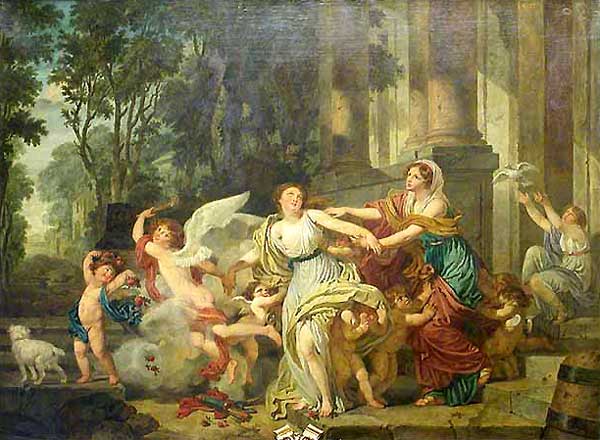
Parislogue’s Tips
Tip #1 Remember the closed day is Tuesday.
Tip #2 Buy your ticket online through FNAC or Ticketnet or buy your ticket from any of the automated ticket machines in the main lobby under the pyramid.
Tip #3 Go for free on the first Sunday of the month and on July 14th, Bastille Day. Or go for a reduced evening rate on Wednesday and Friday nights.
Tip #4 Make sure that the department you plan to visit will be open because some departments such as the French paintings collection is closed on certain days of the week.
Tip #5 Check out the various entrances to the museum to find the quickest access. (The main entrance through the glass pyramid is the most spectacular, but also the most crowded. You can gain access from beneath the Carrousel arch (at the entrance to the Tuileries gardens), underground from the Metro stop: Palais Royal, from the Lion’s entrance (in the wing which borders the Seine River
Tip #6 Visit the museum during evening hours (Wednesday and Friday nights) thus saving your days for outdoor activities (make sure that the wings you want to visit are open during evening hours).
Planning your visit
Tip #1 Pace yourself. The path to three ‘biggies’ Venus de Milo, the Mona Lisa, and Victory at Samathrace is well indicated. Nevertheless the Louvre is huge. The Grand Gallery (where you’ll find Mona Lisa) is almost equal in length to three football fields lined up end to end. If you stop at every painting before you get to the Mona Lisa - well - you get the picture. Grab the ball and run.
Tip #2 Take some time to visit the Louvre website and get familiar with the layout of the museum. Do you have a favorite painting or favorite artist? Check to see if his or her work is included in the vast collection. You’ll want to note the name of the wing i.e. Denon is the ‘Mona Lisa’ wing, Richelieu, etc. and the Floor.
Even after you’ve carefully, noted all this information, you may still get lost - or sometimes the work of art gets temporarily lost. In June, 2007, the Venus de Milo had been moved to the the Sully wing, room 7 ground floor. Those of us who saw Venus languishing in her temporary quarters - we shared her pain. Hopefully, at this writing, she is sitting pretty again.
Tip #3 Take a flashlight (or torch). You’ll need this for the Egyptian wing. I’m not kidding. And I’m not kidding that there’s pickpockets lurking in dimly lit corners.
Tip #5 Make your way to the upper level dining area of the Richelieu wing for a snack or lunch break.
Tip #6 DO NOT TRY TO SEE IT ALL. This is impossible. You will never see it all. Better to spend your morning or afternoon in the company of one or two works of art. You don’t make a work of art your own by acquiring it. No one really can own art. Spend enough time with one painting and it will be yours forever.
So, please, do this for me if you go to the Louvre. Find one painting, one sculpture, one art object - and make it yours. Better yet, share your choice and comments with other Parislogue readers.


















